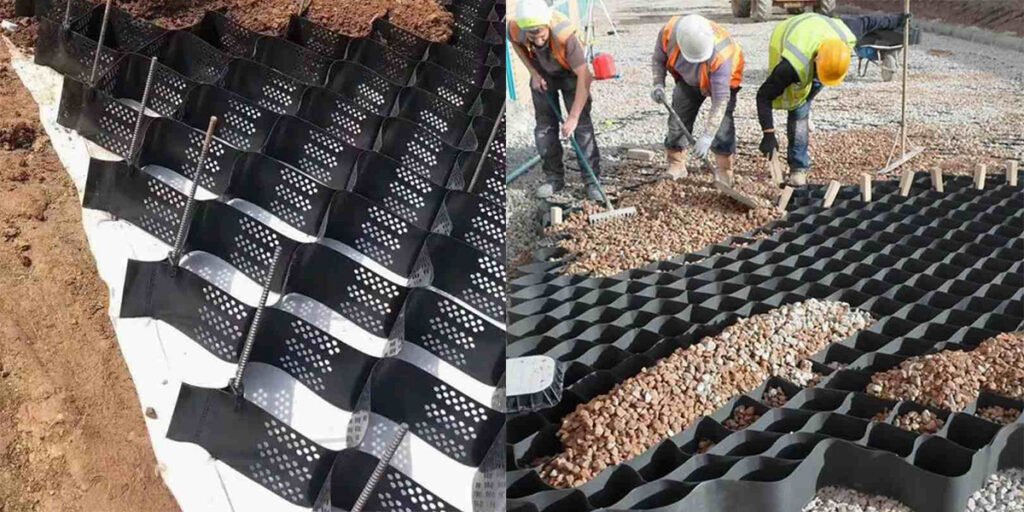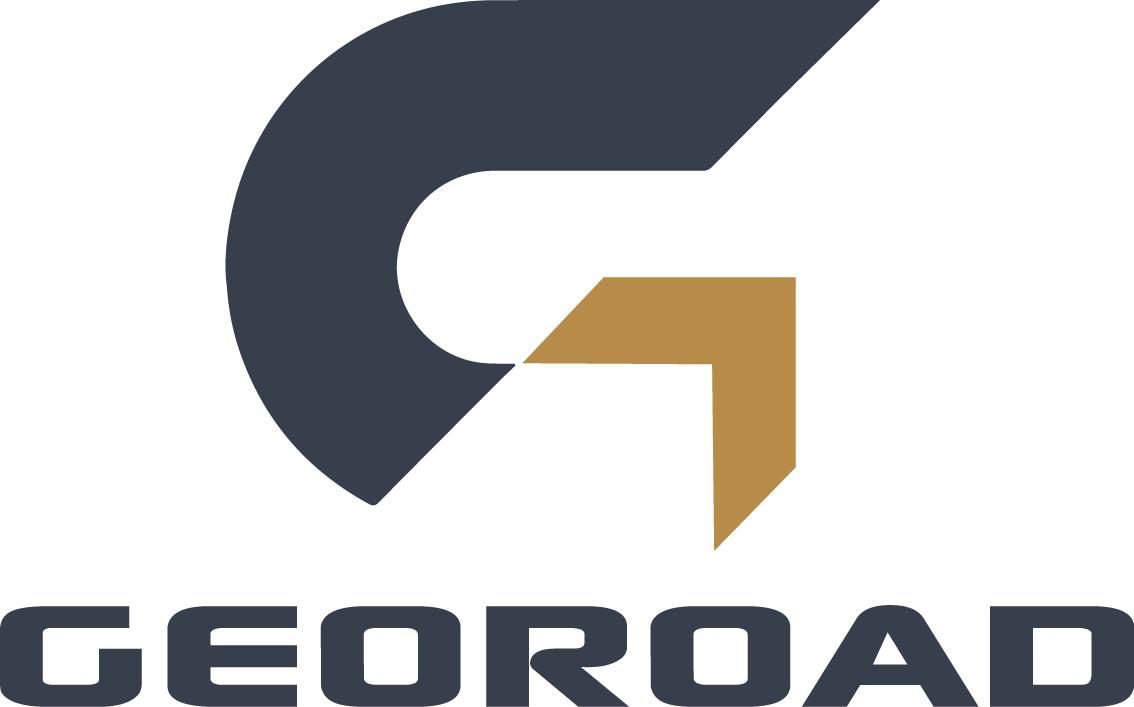
Understanding geocell erosion control Technology
Geocell erosion control geosynthetics, with their three-dimensional honeycomb structure and excellent soil reinforcement capabilities, play an important role in erosion control and environmental protection. Soil erosion not only affects agricultural productivity, but also poses a threat to infrastructure, ecosystems and water resource management. How to effectively control erosion and achieve sustainable development has become a hot topic in the fields of civil engineering, ecological protection and environmental management.
What is Geocell erosion control ?
Geocell erosion control is a three-dimensional honeycomb grid structure material made of high-density polyethylene (HDPE) or other polymer materials. It is formed into fixed grid-like units through ultrasonic welding process. It has good flexibility and high strength. It can be filled with soil, sand or concrete in engineering applications for soil reinforcement, load dispersion and erosion control.
Geocell erosion control features
- High strength and durability; Made of high-density polyethylene (HDPE), it has excellent tensile strength and durability, corrosion resistance, and UV resistance, and can be used for a long time in harsh environments.
- Three-dimensional reinforcement structure; The unique honeycomb structure effectively limits the movement of filling materials and significantly improves the shear strength and bearing capacity of the soil.
- Lightweight design; The material is light, easy to transport and install on site, which can reduce construction costs.
- Versatility; It can be filled with a variety of materials (such as soil, sand or concrete) to meet different engineering needs.
- Environmental protection characteristics; It can promote vegetation recovery, reduce soil erosion, and support ecosystem restoration.
Types of Geocell erosion control
There are various types of geocells available, each designed for specific applications. Some of the most common types include:
- Standard Geocells: Used for general ground stabilization and erosion control.
- High-Density Geocells: Offer enhanced strength and are used for heavy-duty applications like arenas,paddocks, roadways and parking lots.
- Perforated Geocells: Allow for better water drainage and are ideal for areas prone to flooding.
Application of Geocell Erosion Control
- Road and railway engineering; reinforcement of road and railway subgrades to prevent subsidence and cracking of subgrades.
- Application in slope stabilization to reduce the risk of slope sliding and erosion.
- Water conservancy and river engineering; reinforcement of river banks and embankments to prevent water erosion.
- Bottom protection of reservoirs and channels to reduce the damage of water flow to soil.
- Mining areas and industrial sites; foundation stabilization of mining roads and loading and unloading sites.
- Covering and protection of industrial waste landfills.
- Ecological restoration and landscape construction; promote vegetation restoration and improve ecological environment. Provide erosion control and aesthetic effects in parks, green spaces and artificial lake areas.

The role of geocells in erosion control
- Slope erosion: Heavy rain or wind causes soil on the slope to become unstable.
- Riverbank erosion: Water scouring causes riverbank collapse.
- Road erosion: Precipitation scours both sides of the road, destroying the stability of the roadbed.
- Soil fixation: Geocell erosion control effectively restrict the movement of soil particles through three-dimensional structures to prevent soil loss. Especially in areas prone to erosion such as steep slopes and riverbanks, its reinforcement effect is particularly significant.
- Water flow management: The permeability of geocells allows water to pass through while slowing down the speed of water flow and reducing the scouring effect of surface runoff on the soil.
- Vegetation support: Geocells can serve as a growth matrix for vegetation, providing a stable soil environment for planting lawns, shrubs, etc., and enhancing the resilience of regional ecosystems.
- Load dispersion: In areas with heavy loads (such as roads and parking lots), geocells evenly distribute heavy loads over a larger area to prevent foundation settlement.
Installation Process of Geocell erosion control
Base Preparation
The first step in the installation process is to prepare the base. This involves clearing the area of any old soil, vegetation, and debris. Depending on the project requirements, you may need to excavate the area to a certain depth to ensure a stable foundation. Proper base preparation is crucial for the effectiveness of the geocell system. A sub-base layer can be added and graded to achieve the desired level of stability.
Deploying Geocell erosion control Grids
Once the base is prepared, the next step is to deploy the geocell grids. geocell is an excellent choice for this purpose because of its high tensile strength and durability. The geocell grids should be trimmed to fit the area properly and then laid across the excavated base. Secure the grids using stakes or J-hooks to ensure they stay in place. For added stability and separation, it is recommended to use PF Geotextile Fabrics underneath the geocell grids.
Infill Material and Compaction
After the Geocell erosion control grids are securely in place, the next step is to fill the cells with the appropriate infill material. This can be soil, sand, gravel, or rock material, depending on the specific requirements of your project. The infill material should be evenly distributed and raked level. Compaction is a critical step to ensure the stability and longevity of the geocell system. Use a roller or a drag to compact the infill material thoroughly.
Actual case analysis
Case: Slope reinforcement of a highway
Background: The highway passes through mountains, the slope stability is poor, and landslides are prone to occur after heavy rain.
Solution: Use geocells to reinforce the slope, and fill it with planting soil and vegetation seeds to form a green slope protection.
Effect: The slope stability is significantly improved, the vegetation coverage rate reaches more than 90%, and soil and water loss is prevented.
Conclusion
The wide application of geocells in erosion control and soil reinforcement improves the stability and safety of engineering projects and provides strong support for ecological protection and sustainable development. With the continuous advancement of technology, geocells will show their potential in more fields and become an important tool for future civil engineering and environmental management.
For more information about geocells or customized solutions, please feel free to contact us!
Frequently Asked Questions
What is Geocell erosion control ?
Geocell erosion control is a three-dimensional honeycomb-like structure used for ground stabilization and erosion control. It adds strength and increase load-bearing capacity for various construction projects.
How does Geocell work?
Geocell erosion control works by confining the infill material within its cellular structure, which prevents lateral movement and distributes loads over a wider area. This enhances ground stability and reduces the risk of erosion and soil displacement.
What are the benefits of using Geocell in paddocks?
Using Geocell in paddocks offers several benefits, including improved ground stability, enhanced drainage, reduced mud accumulation, and effective erosion control. These features contribute to a safer and more durable paddock environment for horses.
How is Geocell installed?
The installation of Geocell involves several steps: base preparation, deploying the Geocell grids, adding infill material, and compacting the fill. Proper installation ensures maximum effectiveness in ground stabilization and erosion control.
Is Geocell environmentally friendly?
Yes, Geocell is considered environmentally friendly. It is made from eco-friendly materials and promotes sustainable practices by enhancing ground stability and preventing soil erosion. Its durability reduces the need for frequent replacements.
How does Geocell compare in cost and maintenance to traditional paddock materials?
Geocell is cost-effective in the long run because of its durability and low maintenance requirements. While the initial installation cost may be higher compared to traditional materials like gravel or concrete, the reduced need for frequent repairs and replacements makes it a more economical choice.

